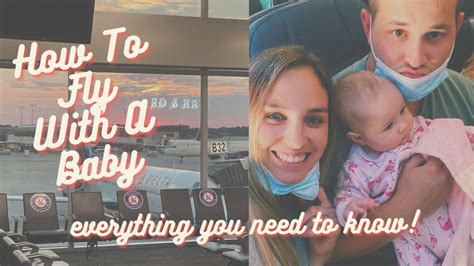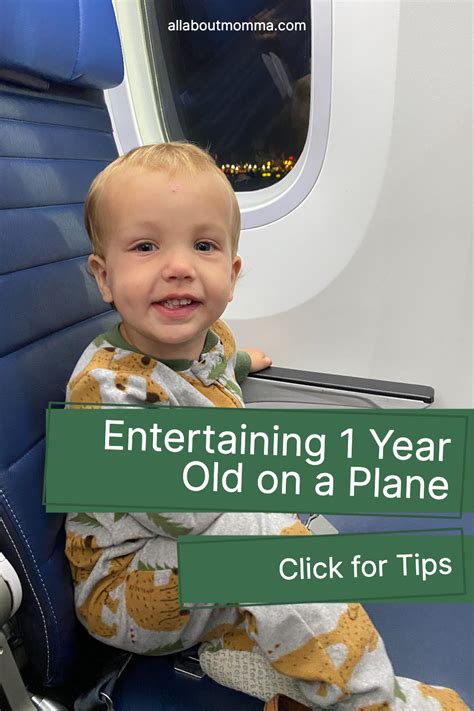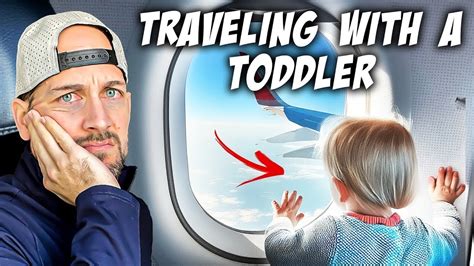Traveling with a newborn can be a daunting experience for any parent, especially when it involves air travel. However, with the right preparations and a little insider knowledge, it’s entirely possible to enjoy a stress-free journey with your little one. This comprehensive guide is designed to help you navigate the complexities of flying with a newborn, from choosing the right flight and booking the best seats to managing diaper changes and keeping your baby comfortable throughout the trip. Whether you’re a first-time parent or a seasoned traveler, these essential tips will ensure both you and your newborn have a pleasant and smooth travel experience, making your journey as
elolok.net offers a detailed exploration of this topic.
1. Pre-Travel Preparations
Traveling with a newborn demands meticulous planning to ensure a seamless and enjoyable experience. Begin by consulting your pediatrician to confirm your baby’s fitness for air travel, especially if they are under two months old. Create a checklist of essential documents, including your baby’s birth certificate and necessary immunization records, as certain airlines may request identification. Pack a well-equipped diaper bag with ample diapers, wipes, and a change of clothes for the journey. Include essentials like baby formula, bottles, pacifiers, and a favorite blanket or toy for comfort. Research airline policies regarding infant travel, such as baggage allowances and stroller or car seat regulations, to avoid airport surprises. Consider using a baby carrier to maintain free hands while navigating the airport. Advance preparation promotes organization and reduces stress, making the beginning of your trip as smooth as possible.

2. Choosing the Right Flight
Choosing the right flight is essential for a stress-free trip with a newborn, leading to a more comfortable experience for both you and your little one. When planning your journey, consider your baby’s sleep schedule. Booking a flight that coincides with their usual sleep times will help to minimize fussiness, as a sleeping baby is much easier to manage. Early morning flights often offer a quieter environment with fewer delays, making them a favorable choice for traveling with a newborn.
While direct flights are ideal to minimize the stress of layovers and multiple takeoffs and landings, especially when traveling with a baby, they may not always be an option. If a direct flight isn’t available, select layovers with sufficient time to address your baby’s needs, such as changing diapers, feeding, and stretching. Some airports offer dedicated family areas, providing a helpful space for families during layovers.
When choosing an airline, prioritize customer service, as a helpful crew can make a significant difference for families. Look for airlines offering priority boarding for families with young children, providing extra time to settle in. Additionally, consider seating options. Bulkhead seats offer more space, while some parents prefer aisle seats for easy access to restrooms and greater mobility. By selecting a flight carefully, you can create a more relaxed and comfortable environment for both you and your newborn.

3. Booking the Best Seats
Flying with a newborn? Seat selection can make a huge difference in your travel experience. Consider seats that offer extra space and convenience for your little one. Bulkhead seats, found at the front of each cabin section, are a popular choice. They often have more legroom and space for a bassinet, which some airlines provide for infants. Being near the flight attendants is another benefit, making it easier to ask for help when you need it.
For parents, aisle seats provide convenient access to the restroom for diaper changes or simply to stroll about and comfort their little ones. When traveling with a companion, contemplate reserving an entire row or selecting window and aisle seats, leaving the middle seat vacant if feasible, to afford extra room.
Before booking your seats, check if the airline offers priority boarding for families with young children. Boarding early gives you time to settle in, organize your baby’s essentials, and ensure everything you need is within easy reach. Carefully selecting your seats can make for a more comfortable and stress-free journey, benefiting both you and your newborn.

4. Packing Essentials for the Baby
A comfortable flight for you and your newborn starts with packing the right essentials. Ensure you have enough diapers for the entire journey, plus a few extras for potential delays. Pack wipes, a changing pad, and disposable diaper bags to make diaper changes seamless. Include a couple of changes of clothes for your baby, as well as an extra shirt for yourself, just in case of spills or accidents.
Remember to pack feeding essentials. For bottle-feeding, include enough formula, pre-measured for ease, along with bottles and a bottle warmer if necessary. Breastfeeding mothers should bring a nursing cover for privacy and comfort. Don’t forget to pack snacks and a water bottle for yourself, as staying hydrated is crucial.
To ensure your baby’s comfort during the flight, pack a familiar blanket or swaddle. The familiar scents and textures can be soothing. Include a few small toys or books to entertain your baby. Pacifiers are also essential for helping with ear discomfort during takeoff and landing. Keep all these items organized in a well-structured diaper bag for easy access. This will help make the flight smoother and more enjoyable for your baby.
5. Navigating Airport Security with a Newborn
Flying with a newborn through airport security can be a stressful experience, but a bit of planning can help ease the journey. Arrive at the airport well in advance to avoid rushing through security. Be prepared to remove your baby from the stroller or carrier, as they will need to be carried through the metal detector. While most airports allow larger quantities of formula, breast milk, and baby food than the usual liquid restrictions, these items will be subject to separate screening.
Pack items in clear, resealable bags for easy inspection. You may be asked to open bottles or containers, so keep them readily accessible. Consider using a baby carrier to keep your hands free while going through security, as it allows for easier management of your belongings. Strollers will need to be folded and placed on the conveyor belt. Please be patient and don’t hesitate to ask for assistance if needed. Airport staff are generally understanding and willing to help parents traveling with young children.
6. In-Flight Comfort and Feeding
A peaceful flight starts with a comfortable baby. Dress your little one in soft, layered clothing so you can easily adjust to the cabin temperature. Bring a favorite blanket to provide a sense of security and comfort. If available, utilize the airline’s bassinet for sleeping; this can significantly contribute to a calm journey for your baby.
Feeding is essential for in-flight comfort. Consider feeding your baby during takeoff and landing, as sucking can help alleviate ear pressure and discomfort. Breastfeeding mothers should bring a nursing cover for privacy and convenience. For bottle-fed babies, prepare bottles beforehand and pack enough formula for the flight and potential delays. If necessary, request assistance from flight attendants for warming bottles. Keep feeding supplies and burp cloths within easy reach for quick access to your baby’s needs. Prioritizing your baby’s comfort and feeding can contribute to a smoother flight experience for everyone.
7. Managing Diaper Changes on a Plane
Changing diapers on a plane calls for some advance planning to make the process go smoothly. Locate the aircraft restroom equipped with a changing table. Most planes have a designated changing area, but it’s a good idea to ask the flight attendants about its location early in the flight.
To keep your diapering essentials organized and easily accessible, pack your diaper bag with diapers, wipes, a changing pad, and disposable diaper bags. A small, portable changing kit that can fit in your carry-on is also a great idea. If you plan to change your baby in the airplane restroom, be aware of the limited space. Utilize the changing table and keep your baby on the changing pad to maintain optimal hygiene.
For your convenience, consider bringing disposable or biodegradable changing pads to protect surfaces and simplify cleanup. If the restroom is crowded or you prefer more space, utilize the area around your seat or a less crowded part of the cabin for diaper changes, laying your baby on a clean blanket. Always have a plan to manage diaper changes efficiently, ensuring both you and your baby remain comfortable throughout the flight.
8. Keeping Your Newborn Entertained
A peaceful flight for both you and your baby is easier when your little one is entertained. Pack a few lightweight, engaging toys and books to keep them occupied. Soft, crinkly toys or rattles are great choices since they’re easy for tiny hands to manage and don’t make excessive noise. A couple of cuddly plush toys can provide comfort and a welcome distraction.
To keep your baby engaged during the flight, consider packing a few novel toys or items they haven’t encountered before. A small mirror or a colorful teething ring can provide entertainment. Mobile apps designed for babies, featuring soothing music or simple visuals, can offer additional distraction when used sparingly. However, ensure these apps are downloaded beforehand to avoid relying on in-flight Wi-Fi.
To keep your baby calm and engaged during the flight, engage with them through talking, singing, or playing simple games like peek-a-boo. Regular interaction can make the journey more enjoyable for both you and your newborn. By implementing these strategies, you can create a more positive experience for everyone.
9. Dealing with Potential Health Issues
A smooth flight with a newborn requires proactive preparation for potential health concerns. Before departure, consult your pediatrician to discuss any specific worries and confirm your baby’s fitness for travel. Pack a compact medical kit containing essentials like infant acetaminophen, a digital thermometer, and any prescribed medications. Familiarize yourself with the signs of common travel discomforts like ear infections or motion sickness, and be prepared to address them effectively if they arise.
Throughout your flight, closely monitor your baby’s health, particularly during takeoff and landing when changes in air pressure can cause discomfort. Keep your baby well-hydrated and comfortable, as dehydration can be a concern. If your baby becomes unusually fussy or unwell, don’t hesitate to request assistance from the flight attendants. They can help locate the nearest medical kit or provide contact information for emergency services.
Preparation and attentiveness are key to effectively managing any health concerns and ensuring a smoother, more comfortable journey for your baby.
10. Post-Flight Tips for a Smooth Transition
To make the transition after your flight as easy as possible for both you and your newborn, remember to take your time. Once you land, give yourself extra time to collect all your belongings and double-check that nothing is left behind. If you’ve checked a stroller or car seat, head directly to the designated pickup area and make sure everything is in good condition before continuing on your way.
Upon arrival, it’s important to create a sense of familiarity for your baby. Set up a cozy spot for them to rest and get used to their new surroundings. If they seem irritable or confused, provide extra comfort and reassurance to help them adjust to the change in environment.
Maintaining your baby’s feeding and sleep routines is important, even if slight adjustments are necessary for the new time zone. When choosing accommodations, like a hotel or rental, ensure they can meet your baby’s needs, such as providing a crib or high chair. Finally, be patient and allow both yourself and your baby time to acclimate to the new environment, understanding that a smooth transition might require a few days.
Traveling with a newborn can be challenging, but with thoughtful preparation and the right strategies, it can be a manageable and even enjoyable experience. By planning ahead, choosing the right flight, and packing essentials wisely, you can make your journey smoother. Managing in-flight comfort and addressing potential health issues will help keep your baby content, while post-flight adjustments ensure a seamless transition. Remember, every trip is an opportunity to refine your travel routine and make future journeys easier. Safe travels and enjoy the adventure with your little one!
elolok.net